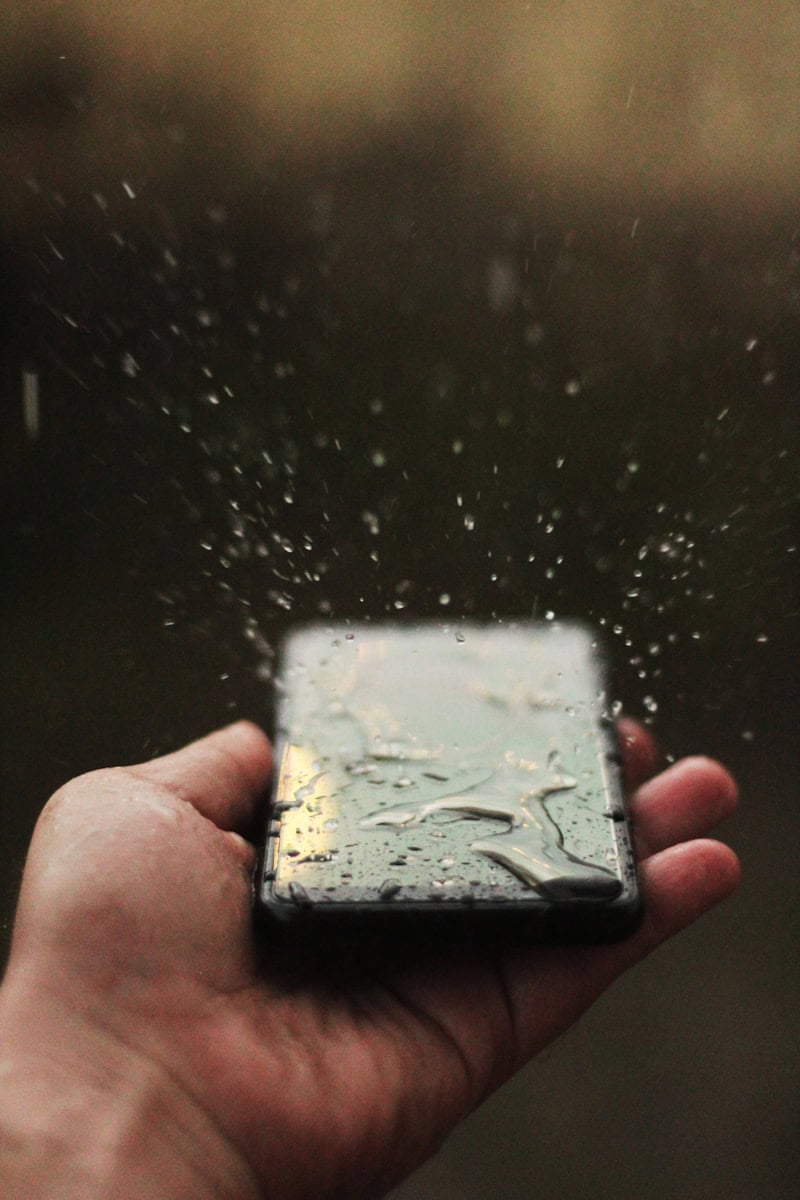Water damage is a concern for many iPhone users. Modern iPhones come with varying degrees of water resistance, though none are completely waterproof. Apple uses an IP rating system to define each model’s resistance to water and dust. The higher the IP rating, the better the device can withstand water exposure. For instance, recent iPhone models have received an IP68 rating, meaning they can survive in water up to a certain depth for a limited amount of time.
Consumers should understand the limits of their iPhone’s water resistance. Regular wear and tear could reduce its effectiveness over time. Additionally, the warranty from Apple does not cover water damage, so users need to exercise caution around liquids. Practical steps, such as avoiding swimming or bathing with the iPhone and checking the seal after drops or impacts, can help maintain its water resistance.
iPhone Waterproof Ratings
Apple iPhones are water‑resistant, not fully waterproof. That means they can handle splashes, rain, and short accidental submersion, but they’re not designed for swimming or long underwater use.
1. 💧 Understanding IP Ratings
- IP67: Resistant to dust + immersion in water up to 1 meter for 30 minutes.
- IP68: Resistant to dust + immersion in water up to 6 meters for 30 minutes (varies slightly by model).
2. 📋 iPhone Water Resistance by Model
iPhone 17 Series (2025)
- iPhone 17, 17 Plus, 17 Pro, 17 Pro Max
- Rating: IP68 (same as iPhone 16)
- Protection: Up to 6 meters for 30 minutes
iPhone 16 Series (2024)
- iPhone 16, 16 Plus, 16 Pro, 16 Pro Max
- Rating: IP68
- Protection: Up to 6 meters for 30 minutes
iPhone 15, 14, 13, 12 Series
- All models (standard, Plus/mini, Pro, Pro Max)
- Rating: IP68
- Protection: Up to 6 meters for 30 minutes
iPhone 11 Series
- iPhone 11 Pro & Pro Max: IP68 (up to 4 meters for 30 minutes)
- iPhone 11: IP68 (up to 2 meters for 30 minutes)
iPhone XS, XS Max, XR
- XS / XS Max: IP68 (up to 2 meters for 30 minutes)
- XR: IP67 (up to 1 meter for 30 minutes)
iPhone X, 8, 8 Plus, 7, 7 Plus
- Rating: IP67
- Protection: Up to 1 meter for 30 minutes
iPhone SE Models
- SE (3rd gen, 2022): IP67
- SE (2nd gen, 2020): IP67
- SE (1st gen, 2016): ❌ No water resistance
Older iPhones (6s and earlier)
- ❌ No official water resistance
3. ⚠️ Important Notes
- Water resistance is not permanent — it can decrease with age and wear.
- Apple’s warranty does not cover liquid damage, even for IP68 models.
- Avoid charging your iPhone while wet.
- Saltwater, soapy water, and pool chemicals can damage seals faster than fresh water.
✅ Quick Summary
- IP68 (best protection): iPhone 12 → iPhone 17 series.
- IP67 (good protection): iPhone 7, 8, X, XR, SE (2nd & 3rd gen).
- No protection: iPhone 6s and older, SE (1st gen).
Key Takeaways
- iPhones feature IP rated water resistance, not waterproofing.
- Water resistance can diminish over time, and Apple’s warranty does not cover liquid damage.
- Careful use can help maintain the water-resistant integrity of an iPhone.
Understanding iPhone Water Resistance
The focus is on what iPhone water resistance means, the significance of IP ratings, and how to handle these devices around water. Apple’s iPhones are not waterproof, but some are water-resistant to certain depths and for limited times.
IP Ratings Explained
IP, or Ingress Protection, ratings tell us how well devices like iPhones resist dust and water. The International Electrotechnical Commission, or IEC, sets these standards. IP67 means total dust resistance and water resistance for up to 1 meter deep for 30 minutes. IP68 takes it further, resisting water submersion up to specific depths usually 2 meters and often more, depending on the model, and also for 30 minutes.
Water Resistance Over iPhone Generations
Starting with the iPhone 7 and iPhone 7 Plus, reaching the iPhone 14 series, iPhones have improved their water resistance. Here’s a look at what each model offers:
- iPhone 7 and 7 Plus: IP67 – up to 1 meter for 30 minutes
- iPhone 8, 8 Plus, X, XR, XS, and XS Max: IP67 – up to 1 meter for 30 minutes
- iPhone 11: IP68 – up to 2 meters for 30 minutes
- iPhone 11 Pro and 11 Pro Max: IP68 – up to 4 meters for 30 minutes
- iPhone 12 models including mini, Pro, and Pro Max: IP68 – up to 6 meters for 30 minutes
- iPhone 13 models including mini, Pro, and Pro Max: IP68 – also up to 6 meters for 30 minutes
- iPhone 14, 14 Plus, Pro, and Pro Max: IP68 – depth ratings may vary
Limitations and Care Instructions
While IP ratings suggest iPhones can resist water, they’re not immune to water damage. Exposure to high-pressure water, steam, sauna, or other liquids like oil, can harm them. Temperature changes can weaken water resistance seals. So, avoid swimming with an iPhone or exposing it to other challenging conditions.
The Liquid Contact Indicator, found inside the SIM slot, turns red if liquid has entered the device, potentially voiding warranty coverage. Apple advises against charging a wet iPhone and recommends drying the lightning port thoroughly if it gets wet. Always refer to the user manual for specific care instructions to maintain the device’s integrity.
Practical Advice for iPhone Water Exposure
When an iPhone encounters water, quick and specific actions can make the difference between a temporary issue and permanent damage. Proper maintenance and understanding service options are essential for optimal care.
Immediate Actions When iPhone Gets Wet
If an iPhone gets wet, it’s important to act fast. First, remove the phone from the water immediately. Turn it off and wipe it down with a soft, lint-free cloth. If water has entered the SIM tray, gently remove the SIM card and wipe off any water. Do not insert objects into the speaker or charging ports, as this can cause further damage.
Maintenance and Long-term Care
Regular maintenance can prevent water damage. Check the liquid contact indicators on the iPhone which show if water has gotten inside. Avoid exposing your iPhone to soaps, detergents, acids or acidic foods, and any liquids like perfume, insect repellent, lotions, sunscreen, oil, adhesive remover, hair dye, and solvents. Keep the device away from extreme temperatures and humidity conditions as they can affect the water resistance seals and decrease overall water resistance.
Apple’s Warranty and Service Options
Apple’s warranty does not cover liquid damage. However, some iPhones may be eligible for out-of-warranty repairs. For additional coverage, consider purchasing AppleCare+. It provides repair or replacement service for an iPhone including its battery, AirPods, and included accessories, with a service fee. Submersion or accidental damages are not covered unless specified in the terms of the AppleCare+ plan. If facing any issues, contact Apple Support or visit an Apple Authorized Service Provider.







